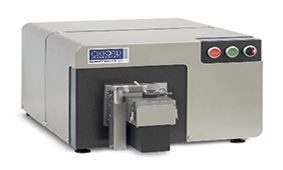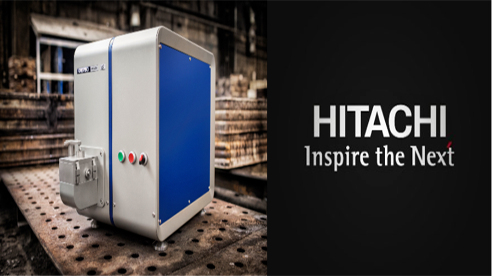
Demanding metal specifications for Foundries

Hitachi High-Tech Analytical Science Corporation (Hitachi High-Tech Analytical Science), a Hitachi High-Technologies Corporation (TSE: 8036) wholly owned subsidiary engaged in the manufacture and sales of analysis and measuring instruments, launches the OE750 – a ground-breaking new optical emission spectrometer for verifying demanding metals specifications in foundries and metal production.
Complex supply chains and increased use of scrap metal as a base material puts foundries and metals manufacturers under increasing pressure to control tramp and trace elements within the melt. The new OE750 optical emission spectrometer offers a level of performance never previously seen in an analyser in this class. It covers the entire spectrum of elements in metal and has some of the lowest detection limits possible. The result is an analyser that has the capability of much more expensive instruments, bringing high quality analysis within reach for the first time for many foundries and metals manufacturers.
Revolutionary new optical concepts, with four patents pending, using superior CMOS detector technology is behind the high level of optical resolution and large dynamic range of the OE750. As a result, this new analyser has a very large wavelength range, meaning it can measure the entire range of elements within metals at ppm levels. This is essential for meeting today’s tight metals specifications and the analyser can meet the requirements of the new ASTM E415 test method for carbon and low-alloy steel.
The OE750 is the ideal analyser for aluminium casting as it can determine phosphorous to very low limits in near eutectic and hypereutectic aluminium-silicon alloys. It can analyse antimony, bismuth, strontium and sodium, and tramp and trace elements, ensuring these can be controlled within the aluminium melt for optimal structural modification. The innovative optics design results in a fast start-up time as the volume occupied by the instrument’s optics is relatively small. This aids high throughput production, where the quality of the melt needs to be verified at several points.
In addition to the new optics design, the OE750 has other technical features that support high volume metals analysis. It has a new sealed spark stand with optimised laminar flow; this reduces argon consumption, reduces the likelihood of contamination and drastically reduces maintenance requirements. A unique mid-pressure system with low-pressure argon purge cuts down the pump usage. This reduces the power consumption of the pump by 90% and enables an oil-free design to be used, increasing reliability and instrument uptime. This makes the OE750 highly reliable with low operating costs.
In addition to innovative hardware technology, the new OE750 includes software that enhances its performance. For example, it includes the Hitachi GRADE Database that includes more than 12 million records for over 339,000 materials from 69 countries and standards, reducing time and potential errors from manually consulting grade catalogues. Optional charge correction software automatically calculates the right quantity of material to add to a melt to bring it into spec.
Quote: Wilhelm Sanders, Hitachi OES Product Business Development Manager said: “ In the past, foundries and metal processing businesses had to choose between high performance analysis and instrumentation that was in their price range. Thanks to the new OE750 they no longer have to make that compromise. The OE750 offers comprehensive metals analysis in one accessible package.”



Trump weighs using $2 billion in CHIPS Act funding for critical minerals

Codelco cuts 2025 copper forecast after El Teniente mine collapse

Electra converts debt, launches $30M raise to jumpstart stalled cobalt refinery

Barrick’s Reko Diq in line for $410M ADB backing

Abcourt readies Sleeping Giant mill to pour first gold since 2014

Nevada army depot to serve as base for first US strategic minerals stockpile

SQM boosts lithium supply plans as prices flick higher

Viridis unveils 200Mt initial reserve for Brazil rare earth project

Tailings could meet much of US critical mineral demand – study

Kyrgyzstan kicks off underground gold mining at Kumtor

Kyrgyzstan kicks off underground gold mining at Kumtor

KoBold Metals granted lithium exploration rights in Congo

Freeport Indonesia to wrap up Gresik plant repairs by early September

Energy Fuels soars on Vulcan Elements partnership

Northern Dynasty sticks to proposal in battle to lift Pebble mine veto

Giustra-backed mining firm teams up with informal miners in Colombia

Critical Metals signs agreement to supply rare earth to US government-funded facility

China extends rare earth controls to imported material

Galan Lithium proceeds with $13M financing for Argentina project

Kyrgyzstan kicks off underground gold mining at Kumtor

Freeport Indonesia to wrap up Gresik plant repairs by early September

Energy Fuels soars on Vulcan Elements partnership

Northern Dynasty sticks to proposal in battle to lift Pebble mine veto

Giustra-backed mining firm teams up with informal miners in Colombia

Critical Metals signs agreement to supply rare earth to US government-funded facility

China extends rare earth controls to imported material

Galan Lithium proceeds with $13M financing for Argentina project

Silver price touches $39 as market weighs rate cut outlook

















